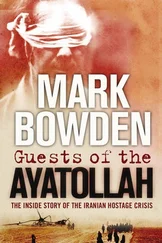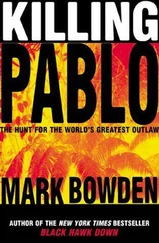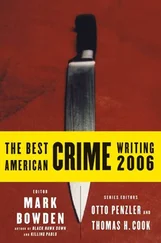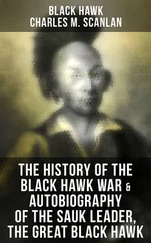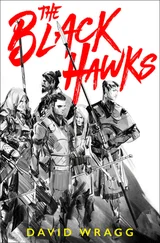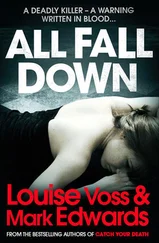Mark Bowden - Black Hawk Down
Здесь есть возможность читать онлайн «Mark Bowden - Black Hawk Down» весь текст электронной книги совершенно бесплатно (целиком полную версию без сокращений). В некоторых случаях можно слушать аудио, скачать через торрент в формате fb2 и присутствует краткое содержание. Город: New York, Год выпуска: 1999, ISBN: 1999, Издательство: Atlantic Monthly Press, Жанр: nonf_military, на английском языке. Описание произведения, (предисловие) а так же отзывы посетителей доступны на портале библиотеки ЛибКат.
- Название:Black Hawk Down
- Автор:
- Издательство:Atlantic Monthly Press
- Жанр:
- Год:1999
- Город:New York
- ISBN:978-0871137388
- Рейтинг книги:3 / 5. Голосов: 1
-
Избранное:Добавить в избранное
- Отзывы:
-
Ваша оценка:
- 60
- 1
- 2
- 3
- 4
- 5
Black Hawk Down: краткое содержание, описание и аннотация
Предлагаем к чтению аннотацию, описание, краткое содержание или предисловие (зависит от того, что написал сам автор книги «Black Hawk Down»). Если вы не нашли необходимую информацию о книге — напишите в комментариях, мы постараемся отыскать её.
Black Hawk Down — читать онлайн бесплатно полную книгу (весь текст) целиком
Ниже представлен текст книги, разбитый по страницам. Система сохранения места последней прочитанной страницы, позволяет с удобством читать онлайн бесплатно книгу «Black Hawk Down», без необходимости каждый раз заново искать на чём Вы остановились. Поставьте закладку, и сможете в любой момент перейти на страницу, на которой закончили чтение.
Интервал:
Закладка:
The grenade had hit Kallman’s door. He and the others inside had been saved by a combination of the metal door and the bulletproof glass inside it. Because the window was rolled down, the point of the grenade hit first steel and then the reinforced glass.
BY NOW THE EFFORTS to direct the convoy had turned to black comedy. It was complicated by the fact that a second convoy had been dispatched from the airport base to attempt a rescue at Mike Durant’s downed Super 64, and those vehicles were under fire, too.
Lt. Col. Danny McKnight, the convoy commander, struggled to make sense of the directions rattling over the radio. Here, the instruction from Command refers to the second crash site, while McKnight’s convoy was actually searching for the first:
Danny, I think you’ve gone too far west trying to look at the second crash. You seem to have gone about four blocks west and five blocks south. Over.
Then:
“Uniform 64, this is Romeo 64. Give me a right turn. Convoy, right turn! Right turn!”
And then:
“You need to go about four blocks south, turn east. There is green smoke marking the site south. Keep coming south.”
At one point a voice came over the busy command frequency begging for order.
“Stop giving directions!… I think you’re talking to the wrong convoy!”
But still the instructions came, and in overlapping confusion:
“Uniform 64, this is Romeo 64. Next right. Next right! Alleyway! Alleyway!”
They just missed their turn.
“Take the next available right, Uniform.”
“Be advised they are coming under heavy fire.”
“Goddamn it, stop! Goddamn it, stop!”
“Right turn! Right turn! You’re taking fire! Hurry up!”
It was the experienced commandos on the convoy who held things together. Every time another man was hurt, the boys would brave fire on the streets to recover him, and Commando medic Don Hutchingson would go to work.
Sgt. First Class Matt Rierson kept radio lines up with the Little Birds, relaying the convoy’s status and calling in air support. Things had deteriorated so badly that officers in the command helicopter were considering just releasing what they called “all the precious cargo"—the 24 Somalian prisoners.
Ahmen Warsame was among the handcuffed prisoners in a five-ton truck. They were stacked tightly into the space, laid out on their sides. Under the din of gunfire he heard the sound of muttered prayers, until the Somalian man praying was shot dead. There was no telling who had fired the shot. Told to be silent, the frightened prisoners began talking among themselves until a Ranger clubbed one of the Somalis in the head.
Finally, after about 45 minutes of meandering, they were right back where they started, out on Hawlwadig Road.
“This is Uniform 64. You’ve got me back in front of the Olympic Hotel.”
McKnight was ready to pack it in. There were far more dead and wounded in the convoy than there were at the two crash sites.
When the shooting let up for a few moments, the convoy stopped. McKnight and some of the ranking noncoms huddled in the street to assess their situation—how they had gotten lost, and where they should go now. They set off a purple smoke grenade to mark their position.
McKnight got on the radio.
“We’ve got a lot of vehicles that will be almost impossible to move. Quite a few casualties. Getting to the crash site will be awful tough. Are pinned down.”
Command was insistent:
“Danny, I really need to get you back to that crash site. I know you turned left on Armed Forces [Blvd.], what’s your status?”
But McKnight and his men had had enough. They had made a courageous effort, but casualties were piling up. They were going to give up on reaching either crash site. The colonel answered:
“I have numerous casualties, vehicles that are halfway running. Got to get these casualties out of here ASAP.”
They started back to base, but they weren’t home yet.
CHAPTER 15
Ambush After Ambush: Fighting Just To Stay Alive
November 30, 1997
SOME OF THE VEHICLES were almost out of ammunition. They had expended thousands of rounds. One of the 24 Somalian prisoners had been shot dead and another was wounded. The back ends of the remaining trucks and humvees in the lost convoy were slick with blood. Chunks of viscera clung to floors and inner walls.
The second humvee in line was dragging an axle and was being pushed by the five-ton truck behind it. Another humvee had three flat tires and two dozen bullet holes. SEAL Sgt. Howard Wasdin, who had been shot in both legs, had them draped up over the dash and stretched out on the hood. Yet another humvee had a grenade hole in the side and four flat tires.
They were shooting at everything now. They had abandoned their new mission—to rescue downed pilot Cliff Wolcott and then try to reach pilot Mike Durant’s crash site. Now they were fighting just to stay alive as the convoy wandered into one ambush after another, trying to find its way back to base.
Up in a humvee turret and behind a Mark 19, a machine gun grenade launcher, Spec. James Cavaco was pumping one big round after another into the windows of a building from which they were taking fire. It was hard to shoot the Mark 19 accurately, but Cavaco was dropping grenades neatly into the second-story windows one after another. Bang! Bang! Bang! Bang!
From his seat in the second five-ton, Spec. Eric Spalding shouted out to his friend: “Yeah! Get ’em, ’Vaco!”
It was just after that when Cavaco, firing to his left down an alleyway, slumped forward. He had taken a round to the back of his head and was dead. Spalding helped load him on the back of the truck. They tossed his body up and it landed on the legs of an injured Ranger in back, who let out a shriek.
Sgt. Paul Leonard, one of the Commando soldiers, stepped up behind Cavaco’s Mark 19. He was even more of an expert shot. The big 40mm rounds were designed to penetrate two inches of steel before exploding. As Leonard fired, the rounds screamed right through the bodies of Somalian gunmen and exploded farther down the street.
But not long after he took over the gun, a bullet came through the side window of the humvee and took off the back of Leonard’s left leg just below the knee. He was standing in the turret, so all the men in the humvee were splattered with tissue and blood. The muscles of his leg hung open in oozing flaps. But Leonard was still standing, and still shooting. A Ranger tied a tourniquet around his leg.
The convoy was taking a beating, but it was also leaving a terrible swath of dead and wounded Somalis in its wake.
In another humvee, Pfc. Tory Carlson was shooting out the back, his .50-cal machine gun rocking the vehicle, when he saw three Somalian men cross the big gun’s range. Their bodies went flying, and as the rounds kept coming the bodies skipped and bounced along the ground until they were thrown against a wall. Then the men came apart.
Carlson was watching with horror and satisfaction when he felt a sudden blow and sharp pain in his right knee. It felt as if someone had taken a knife and held it to his knee and then driven it in with a sledgehammer. Carlson glanced down and saw blood rapidly staining his pants. He said a prayer and kept shooting. He had been wildly scared for longer now than he had ever been in his life, and now it was somehow worse. His heart banged in his chest and he found it hard to breathe and he thought he might die right then of fright.
His head was filled with the sounds of shooting and explosions and the visions of his friends going down, one by one. Blood splashed everywhere, oily and sticky with its dank, coppery smell. He figured, This is it for me. And then, in that moment of maximum terror, he felt it all abruptly, inexplicably fall away. He had stopped caring about himself. He would think about this a lot later, and his best explanation was that he no longer mattered, even to himself. He had passed through some sort of barrier. He had to keep fighting, because the other guys, his buddies, were all that mattered.
Читать дальшеИнтервал:
Закладка:
Похожие книги на «Black Hawk Down»
Представляем Вашему вниманию похожие книги на «Black Hawk Down» списком для выбора. Мы отобрали схожую по названию и смыслу литературу в надежде предоставить читателям больше вариантов отыскать новые, интересные, ещё непрочитанные произведения.
Обсуждение, отзывы о книге «Black Hawk Down» и просто собственные мнения читателей. Оставьте ваши комментарии, напишите, что Вы думаете о произведении, его смысле или главных героях. Укажите что конкретно понравилось, а что нет, и почему Вы так считаете.






